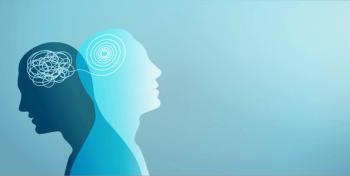
Smartphones, Evening Light, and Childhood Bipolar Disorder
The biological clock is set by daily cycles of light and darkness, and regulation of these cycles is a promising avenue of prevention in bipolar disorder. That is exactly what we’re not doing.
Dr Aiken is Instructor in Clinical Psychiatry at the Wake Forest University School of Medicine and the Director of the
RESEARCH UPDATE
The biological clock is set by daily cycles of light and darkness, and regulation of these cycles is a promising avenue of prevention in bipolar disorder. That is exactly what we’re not doing. Smartphones, LED screens, and energy-efficient bulbs emit a blue haze of light that’s shorter in wavelength than the yellowish hue of starlight and candlelight that humans evolved under. This change has potent effects on circadian rhythms.
Blue light and melatonin
Light suppresses melatonin, but not just any light. The color is what matters here, and blue light in the 460 nm to 480 nm range is particularly good at shutting down melatonin and keeping people awake and alert. Rods and cones detect the full spectrum of light for the visual cortex, and a third photoreceptor was discovered in the 1990’s that only responds to blue light. Called melanopsin, it regulates melatonin production by direct communication with the suprachiasmatic nucleus, the time-keeper of the biological clock.1
This means that strong shifts in blue-spectrum light are required to set the biological clock at the two critical bookends of the day: morning and night. High levels of evening blue light, and low levels in the morning, disrupt not just circadian rhythms but also the clock genes implicated in bipolar and other psychiatric disorders.2,3
The American Medical Association has released a
A slightly broken biological clock
Nearly every gear in the biological clock is disrupted in bipolar disorder. Circadian genes are altered and melatonin is delayed, diminished, and more easily suppressed by blue light.5 Shifts in the timing of light and darkness, such as shift work, seasonal changes, and travel across several time zones, can trigger new episodes.7
Nocturnal blue light and ambient bedroom light could be added to that list of circadian disruptors. Evening use of smartphones delays and reduces melatonin secretion, and impairs sleep and cognition with a medium effect size (0.5).8 A viscous cycle is at play here, as evening-types (“night owls”) have a greater tendency to use electronics at night, and that use independently shifts circadian rhythms toward the evening type (“phase delay”).5,9 The evening-type is prominent in adolescents, and is a risk factor for bipolar disorder, depression, and substance abuse.7,10
Ambient bedroom light is also a problem, as it passes through the eyelids and suppresses melatonin during sleep. Controlled animal studies have found that ambient nocturnal light causes depression, impedes learning, and has detrimental effects on the brain (lowering BDNF and shortening the dendritic spines involved in learning and cognition).11 Those associations are strong enough that controlled studies of bedroom light are considered unethical in humans, but cross-sectional and longitudinal observations (the next best thing) support the same conclusions.12
The circadian system is also involved in critical periods of brain development, and disruptions of light signals may play a role in the onset of psychiatric illnesses as well as their exacerbation.13 When mice are exposed to nocturnal dim light as infants, they grow up to have more anxiety as adults.14 Human studies have found a strong link between rapid flux of
Simple solutions
All of this suggests that physical and mental health would improve by following the natural flow of day and night: Bright light in the morning, low levels of blue light in the evening, and pitch dark in the bedroom. Motivating teens to adopt that lifestyle is not easy, and in the next installment I’ll review new technologies that can ease those changes.
Disclosures:
Dr Aiken does not accept honoraria from pharmaceutical companies but receives royalties from W.W. Norton & Co. for a book he co-authored with James Phelps, MD, Bipolar, Not So Much.
References:
1. Lucas RJ, Peirson SN, Berson DM, et al. Measuring and using light in the melanopsin age. Trends Neurosci. 2014;37:1-9.
2. Charrier A, Olliac B, Roubertoux P, et al.
3. Olliac B, Ouss L, Charrier A.
4. Lunn RM, Blask DE, Coogan AN, et al.
5. Touitou Y, Touitou D, Reinberg A.
6. Abreu T, Bragança M.
7. Takaesu Y.
8. Heo JY, Kim K, Fava M, et al.
9. Vollmer C, Michel U, Randler C.
10. Kivelä L, Papadopoulos MR, Antypa N.
11. Bedrosian TA, Vaughn CA, Galan A, et al.
12. Obayashi K, Saeki K, Kurumatani N.
13. Kobayashi Y, Ye Z, Hensch TK.
14. Borniger JC, McHenry ZD, Abi Salloum BA, et al.
15. Bauer M, Glenn T, Alda M, et al.
Newsletter
Receive trusted psychiatric news, expert analysis, and clinical insights — subscribe today to support your practice and your patients.











